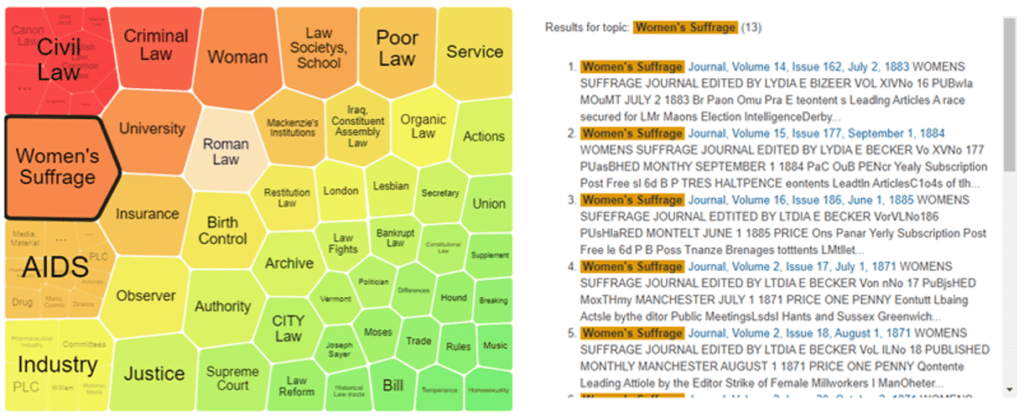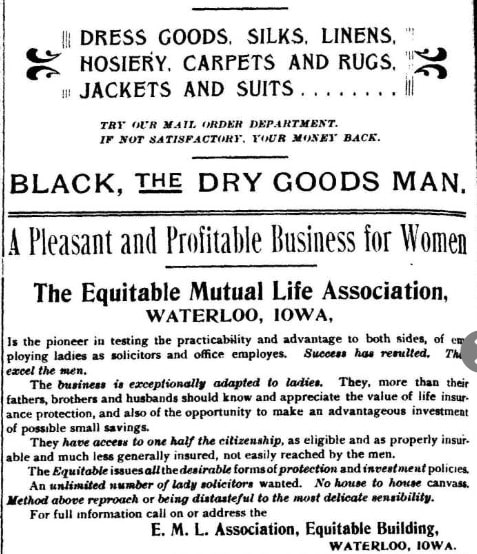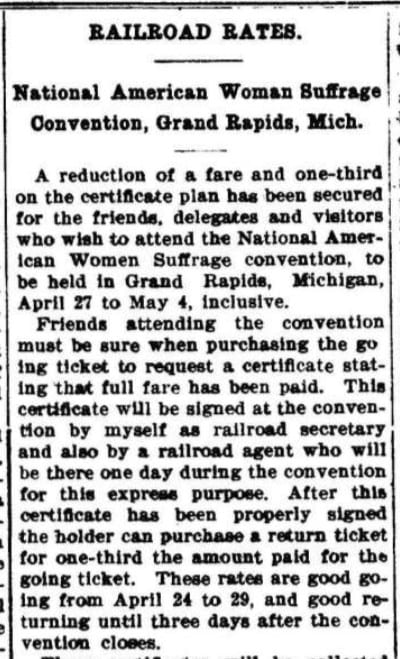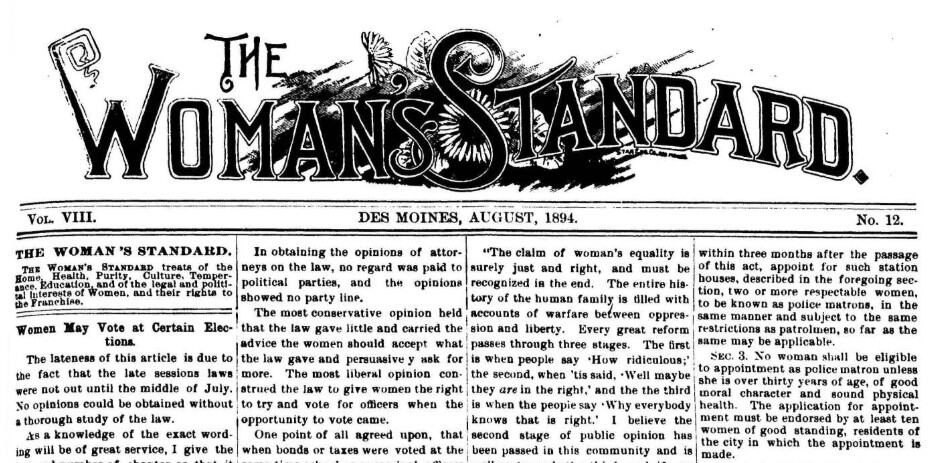│by Pollie Walker, Gale Ambassador at the University of Liverpool │
At the University of Liverpool, students are lucky enough to have a vast wealth of primary sources easily accessible to us – and that shouldn’t go unnoticed! Coming to Gale Primary Sources via the Liverpool University library page, I was able to access some excellent sources about the women’s suffrage movement in Iowa from 1894 through to 1937.
The Women’s Standard
For example, the masthead seen at the top of this blog post is from The Women’s Standard, a periodical found in Gale’s Archives Unbound, which described its purpose and coverage (quite ambitiously!) as “treats of the Home, Health, Purity, Culture, Temperance, Education and of the legal and political interest of women and their right to the Franchise.” Exploring this title enabled me to see a different side to the suffrage movement – a movement I had previously only associated with fierce protest, bombs in letterboxes, extreme acts such as stepping out in front of charging horses and a brutal struggle against the likes of force-feeding. Although all these aspects shouldn’t be forgotten, I have discovered there is a lighter side to the movement too. The articles in papers such as The Women’s Standard are written with a refreshing humour, playfulness and light-hearted attitude. They also discuss positive things such as impactful conferences and changes in legislature. I found primary sources such as this gave me a more comprehensive view of their activities and motivations.
And, of course, the fact that I can access sources from 1894 in the first place is incredible. So – calling all History geeks! If you love to understand how the world came to be the way it is today – whether that be an aspect of legislature, culture or economics – you can use Gale Primary Sources to investigate with just a few clicks!
The Topic Finder tool
To find these sources all I did was search “law” in Gale Primary Sources, navigate to the Topic Finder tool, and then click on “women’s suffrage”. Easy as that. The information I was able to access was vast and incredible – it felt like I was able to step right into the past!

A tool for women’s education as well as entertainment
In the first primary source I read, I discovered women became conditional voters on certain matters before they became electors. It was so interesting to see how this article breaks down the law, to make it understandable to readers. It says, for example, “the above law gives women the right to vote at municipal elections when bonds, taxes etc…are to be voted; independent school district elections when bonds, taxes… are to be voted; at the annual district township meeting when bonds etc., are to be voted and in special elections called for voting such bonds, taxes etc.” Clearly this magazine was a tool for women’s education as well as entertainment.
“If we meet ridicule remember they met abuse…”
I was also able to unearth different perspectives on the law, such as the Conservative party opinion that women should accept the status quo, and the Liberal opinion that women should be able to vote. While reading this article, I myself felt inspired by quotes such as: “if we meet ridicule remember they met abuse… if our path is boarded by difficulties, theirs was covered by them and they were confronted by an almost unbroken wall of popular prejudice.” Such moving words make me want to start a women’s movement myself!
Advertising
Another aspect of The Women’s Standard that I found personally fascinating, and which also helped give me a fuller picture of the women’s rights movement, are the advertisements. I think they show how tailored this paper was to a female readership. As a result this paper presents everything from business ideas to adverts for washing up powder – and thus it straddles what women were traditionally associated with (the chores of a housewife) and the realms they aspired to enter – business and politics.

Financial support for the women’s rights movement
It also seems significant that these sources discuss national conventions that took place in the campaign for women’s suffrage, suggesting it was a nationwide phenomenon, with highly organised activities – it was not just fought by a limited number of fiery women. It also struck me that not only were large numbers of suffragists attending the convention, there was a reduced fare on the trains to help them get there! This support from the train company shows us that (despite the opposition women’s suffrage stereotypically received), many corporations supported the cause, and even offered practical assistance.

Humour and sarcasm
When reading over this article, one can also detect a tone of sarcasm and humour in the writing: “there would be a great deal more justice in the world if women were executioners and only men were culprits,” writes the author. Whilst this is sarcastic, the point is clear. Plus, we can also draw understanding from the fact that, whilst passionate about the movement, the writer is also able to be light-hearted and humorous about the issue at hand. There are also some more radical views on display in these sources, for example the suggestion that women are the creators and therefore superior to men, yet overall my research has shown me a softer, more light-hearted and humorous side to the women’s suffrage campaign. As a result, I now have a deeper understanding of this complex, multifaceted social movement.
These were incredible articles to read, particularly as a woman currently studying politics. Yet I feel this treasure trove of primary sources would enrich anyone’s student experience, regardless of gender or subject studied. Students in any discipline would undoubtedly be able to draw information, depth, context and understanding out of these sources to enhance their analysis.
Interested in reading more primary sources about women’s suffrage? Check out Karen Harker’s post ‘Leading Ladies: The actresses who fought for women’s suffrage‘.


